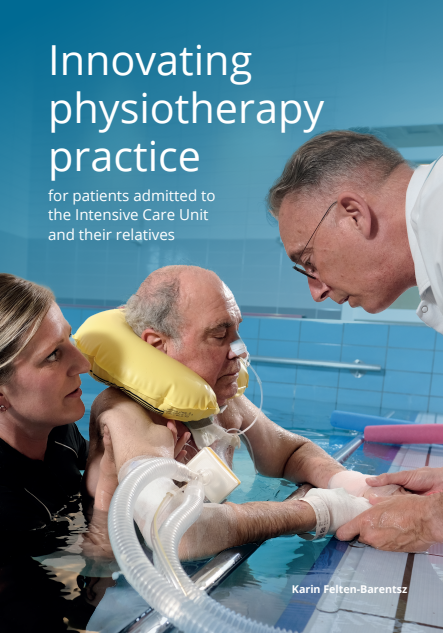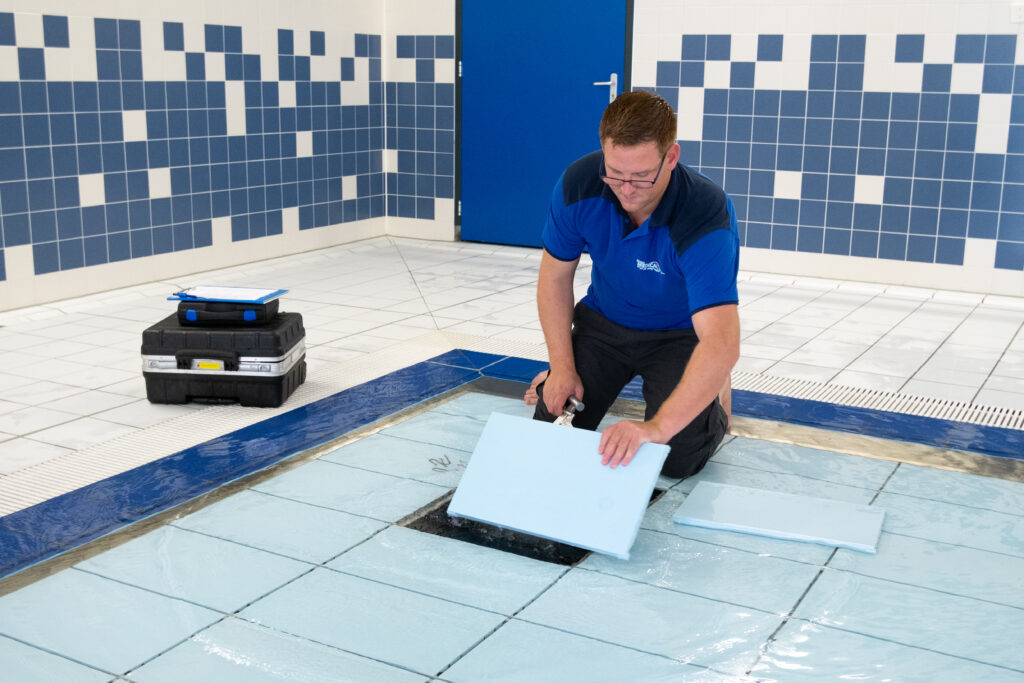Aquatic Physical Therapy is primarily focused on exercise in water but also includes hands-on techniques. It can include some of the methods mentioned underneath, it can also include joint mobilizing or stretching techniques or other passive relaxation techniques, it can also include gait or postural re-education. All techniques can be combined depending on the individual’s goals.
In order to achieve specific physical or functional goals, aquatic physical therapists can choose a number of concepts (methods or techniques). Well-known concepts from Europe are Water Specific Therapy (WST) and the Bad Ragaz Ring Method (1955). The USA has given us Deep Water Running or Aquajogging (1970) and Watsu (early 1980s). More recently, Ai Chi has been developed in Japan (1993).
The reason for the choice to give a short description of these concepts is the availability of courses, information on the internet and the choice of editors of recent American textbooks on aquatic therapy to include these concepts in their books.
Water Specific Therapy (WST)
Water Specific Therapy (WST) is THE aquatic therapy concept worldwide, included in more than 50 published articles. WST covers the entire ICF-spectrum including one of the most important topics in rehabilitation: fall prevention. It is an aquatic therapy with elements of the Halliwick 10 point-programme swimming method. Halliwick is used as pretraining for exercises that use the fluidmechanical properties of water. The Halliwick ten-point-programme was developed by the engineer James McMillan. The first 6 points were also described by him as pretraining, i.e. teaching a patient to dare to fall and be able to stand up. These points are related to aquatic self-efficay as basis for compliance to exercises and activities that address a patient specific problem, using the constraints of the aquatic environment. Some of these constraints are related to fluidmechanics: use of flow conditions (turbulence), waves of transmission and metacentric effects (using the change of gravity and buoyancy induced torques).
WST started it’s development in 1974 when McMillan was asked to found an aquatic research group in the medical centre of Bad Ragaz and the neighbouring rehabilitation centre “Kliniken Valens”, in Switzerland. He and the physiotherapists in the group developed exercises that were described in the German book “Wasserspezifische Therapie und Training”, written by Urs Gamper, one of the research group members. This book has been modernized to the present website: Water Specific Therapy .
Already Noh (2008) used the pre-training to continue with Ai Chi and Kwon (2010) to continue with an obstacle course. Where swimming mostly is a continuation of the 10 point programme in paediatrics, in aquatic therapy for adults a focus on postural control (in fall prevention) is more logic. This is what the quoted literature shows. WST has been described in-depth in the book Comprehensive Aquatic Therapy by Lambeck & Gamper (2011) and this chapter, together with the publication by Noh in 2008 were the reason to include WST in the Dutch guidelines on stroke treatment.
In 2018, the German book “Wasserspezifische Therapie” was published by Katharina Kastner. This book covers in-depth descriptions of all elements that belong to WST and Halliwick. See the book: “Wasserspezifische Therapie”
The choice for WST (exercises and activities) is the result of a clinical reasoning process in which, partly based on external evidence, aquatic therapy is chosen as the best intervention for a certain patient with (mostly) a certain neuromusculoskeletal problem.
When the intervention requires activity of the patients and the goals are at the level of function of ICF: WST has proven to have clinical relevant results in e.g. neurological patients (Vivas 2011, Scarano 2012, Tripp 2013, Zhang 2016, Terrens 2020). A clinical question in WST could be : “can metacentric effects be used to train central stability in an ataxic patient”? Perhaps more important is that the combined approach of WST and original Halliwick group activities fit perfectly in the contemporary framework of neuroprotective exercises: a combination of sustained physical activities and environmental enrichment in which e.g. executive functions are challenged and neuroinflammation is addressed. Also (an)aerobic principles can be included: muscle power training, sensorimotor agility, cardiovascular endurance/health.
For more information about Water Specific Therapy (WST), visit the IATF website.
The Bad Ragaz Ring Method
The Bad Ragaz Ring Method has a long history of adaptations to the state of art in aquatic proprioceptive neuromuscular facilitation. Originally based on PNF, fluidmechanical elements were added to adapt it for aquatic therapy. The key element is the activation of muscles in (myofascial) chains as a preparation for functional activities in water and on land. Recently, principles of muscular fine tuning, PNF techniques, training physiology have been included. Also concepts like functional kinetics and core stabilization are a part of contemporary BRRM, and applied to working with neurologic, orthopedic and rheumatic populations. See the bad Ragaz website for more information.
Examples of contemporary topics that are included in the course are:
- reversals of antagonists: Reversals increase strength much more than contractions in one direction
- combination of isotonics: the eccentric component is very important to balance inflammation reactions in e.g. the muscle envelope
- proprioceptive discrimination training in an environment in which pain is “under the radar”, in order to influence neuro-inflammation; e.g. in low back pain
- three-dimensional movements are essential to a proper mechanotransduction, using fascia properties
- tensegrity of intramuscular fascia can be trained by smooth variable contractions and add to fascia resilience
- clinical reasoning with case related scripts
Deep Water Running (DWR)
DWR is a technique in which clients, mostly supported by a specific device – wetbelt or aquajogger – walk or run through deep water. The rationale is to use a frontal plane as large as possible in order to achieve maximal impedance. This is the basis of cardiovascular/pulmonal training, in general focused on aerobic conditioning. DWR is not a “typical” aquatic physical therapy application, but many clients treated in physical therapy have a limited stamina / aerobic condition. The aquatic physical therapist should be able to match the reduced carriability of these clients with the proper application of the external load using DWR.
DWR (and many other aquatic physical fitness techniques) are examples of techniques that both can be used in aquatic physical therapy as well as in aquatic exercise. The evidence of the value aerobic conditioning in water is huge. The method is not that important, as long as the (ACSM) rules for cardiovascular conditioning are obeyed.
Watsu
Watsu originates from Zen-Shiatsu in water and started as a wellness technique. The client (or receiver) is completely passive and is moved gently by the practitioner (or giver) through the water. The goal is to stretch meridians and to balance energy flow in the body. This means that the client tends to relax (deeply). Various reasons might explain this deep relaxation, an important one is probably the effect on the autonomous system through cutaneous and kinaesthetic afferent information.
By applying passive motion to a client, the visco-elastic stiffness of connective tissue in arthrogenic, musculotendinogenic and neurogenic tissues can be addressed. Watsu is highly valued by clients and practitioners claim a large amount of health benefits. The evidence base is small however with only a few clinical trials. Because of the high value, quite an amount of variations exist worldwide.
Clinical Ai Chi
Clinical Ai Chi is Ai Chi, which is used to solve a patient specific problem. This mostly means that it is adapted to the possibilities of a person with a musculoskeletal and/or neurological problem. The elements of Clinical Ai Chi should fit in a custom-made treatment programme and be the result of a clinical reasoning process. Ai Chi is a postural activity in which transfers of the centre of gravity, reaching with arms, supporting activity of legs and continuous concentric –eccentric contractions are characteristics at e.g. the categories “Neuromusculoskeletal – and movement related function (b7)” and “Mobility (d4)” of the ICF (International Classification of Functioning, Disability and Health). Most of these characteristics are related to static – and dynamic balance control and might influence motor control to prevent falling
Clinical questions then could be: “can Ai Chi be adapted to facilitate hip-strategies in patients with chronic low back pain”, or “can Ai Chi be adapted to Parkinson patients in order to train medio-lateral stability”.
Clinical Ai Chi is an in-depth application of the well-known regular Ai Chi kata’s, and included in the clinical reasoning process that belongs to choice-making in (physical) therapy. Examples are (apart from the 2mentioned above):
– focusing on reaching or small bases of support in various kata’s
– facilitation of hip strategies in patients with e.g foot problems (neuropathic foot)
– Moving to the limits of reaching in patients with a limited functional reach test
– references to literature; Johan lambeck is co-author of 5 studies in (Clinical) Ai Chi and of chapters in various textbooks
– the application to breast cancer lymphedema, developed by Anne Bommer and Paula Geigle
– the inclusion of mindful principles with focus on proprioceptive discrimination
These and other adaptations have been worked out in Clinical Ai Chi and can be found on the Clinical Ai Chi website.





